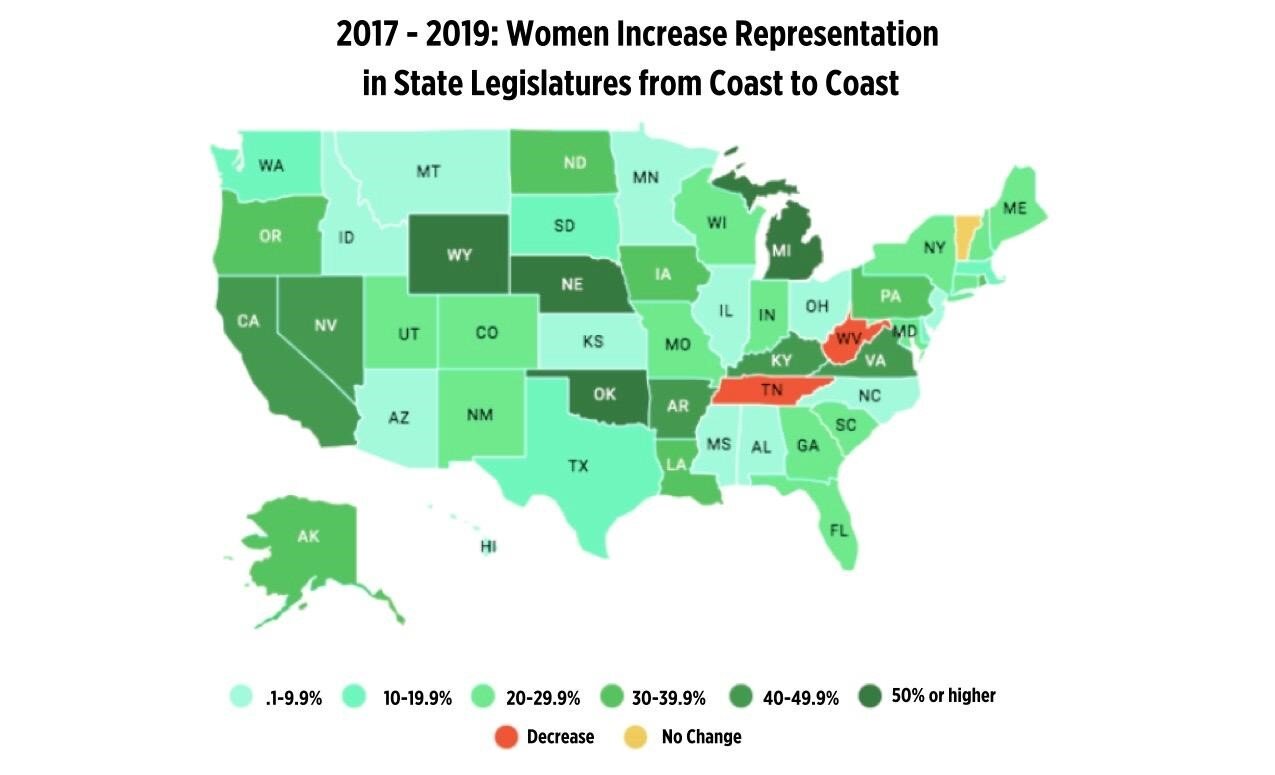White Men's Electability Advantage Is a Myth
In the run-up to the 2020 presidential election, we’re seeing fierce jockeying over which candidate is most “electable,” a term loaded with assumptions about voter preferences for white male candidates.
But being a white man actually gets you zero advantage at the polls. The project I lead, the Reflective Democracy Campaign, performed a nonpartisan analysis of the 2018 general election and found that when they’re on the ballot, women of all races and men of color win as often as white men do. In fact, comparing shares of candidates to winners, women of all races and men of color over-performed in 2018. The only demographic to dip slightly was white men, who were 61 percent of candidates and 60 percent of winners.
There’s no question that white men dominate politics: at 30 percent of the population they hold 62 percent of local, state and federal elected offices. But it’s not because they’re more electable. Instead, white men have an artificially inflated track record of winning elections because until quite recently, no one else got recruited to run for office. Even today, the gatekeepers who choose candidates are mostly white men themselves, and in that echo chamber of party bosses and major donors, candidates who aren’t white men look risky and unfamiliar.
But while most pundits and political gatekeepers still buy the myth of white male electability, our voter surveys reveal that a bi-partisan majority wants leaders who better reflect America’s diverse population. And in 2018, women of all races made astonishing gains at the polls, with forty-seven states adding more women state legislators.
In Congress, meanwhile, women’s headcount since 2015 has grown by 23 percent. And while men of color also are making gains, in the #metoo era it is women doing the heavy lifting in shifting the demographics of political power.
Some pundits claim when it comes to “electability,” executive office is different, and voters only trust white men in that role. Yet our research finds that women’s share of statewide executive offices has increased by 57 percent since 2015. In 2018 alone, Americans elected five of the nine female governors now in office.
Once you know the truth, it’s hard not to notice how the electability myth – a powerful relic from a time when only white men were considered viable candidates – shapes our political landscape today. The persistent assumption that the safest path to victory is a white man pops up daily in new reports and commentaries, shaping our perceptions and anxieties about the 2020 election.
Here is permission to let it go: Your candidate, be it a woman of any race, a white man, or a man of color, is no more or less likely to win based on their demographic profile. Lots of factors are at play in every election. But the greater electability of white men? That’s not one of them.
Brenda Choresi Carter directs the Reflective Democracy Campaign, a project of the Women Donors Network. An organizer and campaign strategist for with almost 20 years of experience, she formerly held several key roles with UNITE HERE, the union of hospitality industry workers. In addition to her organizing work, she regularly teaches and writes on American culture, society, and politics. Brenda has been a visiting faculty member at Brown University and the Wesleyan University Center for Prison Education. She earned a B.A. from Georgetown University and a Ph.D. in American Studies at Yale.





